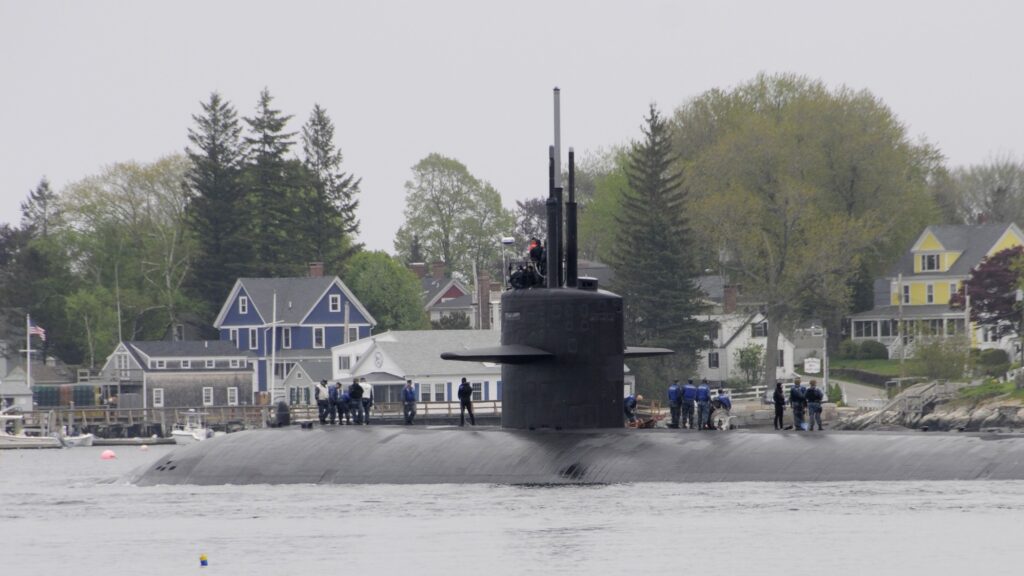
The Los Angeles-class attack submarine USS Helena departs Portsmouth Naval Shipyard after completion of extended maintenance. (U.S. Navy photo by James Cleveland)
WASHINGTON: The Navy awarded a contract worth up to $33 million to Bollinger Shipyards to finish the refurbishment of two Virginia-class submarine dry docks, a milestone the service says will be the “first large-scale capital equipment project” as part of the shipyard improvement program.
The dry docks are in Portsmouth Naval Shipyard in Kittery, Maine, and the work involves building the facilities’ caissons. The work is expected to be completed by September 2025.
“These dry docks will be the first added dry-docking capacity for the Navy in the last
quarter century or more,” according to an April 20 statement from Naval Facilities Engineering Systems Command. “The Navy’s planned use of these new dry docks is anticipated to mitigate deferred or delayed Virginia-class submarine maintenance availabilities through 2040.”
A dry dock’s caisson acts as the watertight divider wall between the work area and the larger body of water to which the shipyard is connected. The caisson — which is usually a large iron or steel structure — can be flooded to seat it into position, blocking off additional water from entering the dry dock. When a vessel is ready to leave the shipyard, the dry dock is flooded with water using a pump system while the insides of the caisson is drained, forcing the structure to float and allowing it to be moved out of the way.
Alleviating the Navy’s notorious backlog of submarine maintenance is one of the key issues the service hopes to resolve through its plan to revamp the four public shipyards, also called the Shipyard Infrastructure Optimization Program (SIOP).
A key issue that has arisen since the service first pitched its $21 billion, 20-year plan is the speed at which the investment and construction happens. Some lawmakers on Capitol Hill argue the 20-year timeline is far too slow to both relieve the current pressure the public yards are facing as well as keeping the current submarine force — highly popular assets among the combatant commanders — deploying regularly.
Some lawmakers tried, and failed, to insert more than $20 billion in the last defense spending bill, most of which would have gone to SIOP, and a smaller portion would have assisted the country’s major private shipyards. Proponents of that bill, such as Rep. Rob Wittman, R-Va., told Breaking Defense they plan on trying again to insert that funding into the next defense spending bill.
The biggest problem for Navy brass with supercharging the SIOP’s timeline, though, is how it might hurt the service’s ability to service its submarines in the meantime. In other words, every dry dock being fixed for tomorrow is not able to help maintain the fleet today.
Fincantieri acquires Leonardo’s undersea armaments business worth up to $447 million
Terms of the acquisition include the shipbuilder paying a fixed fee of €300 million ($323 million), and “based on certain growth assumptions,” an additional €115 ($124 million) directly relating to performance of the underwater armaments business this year.


























